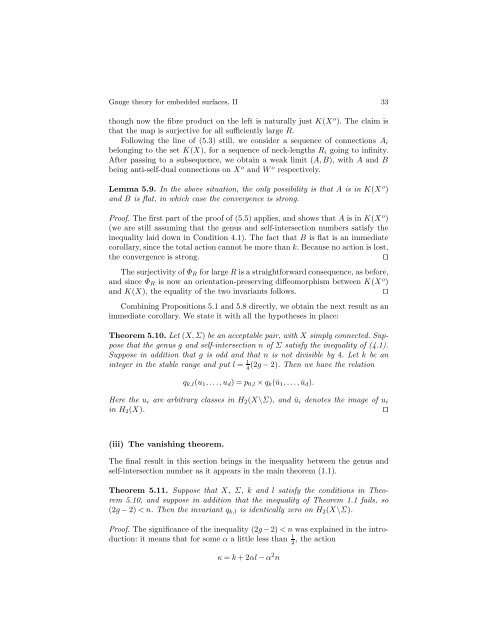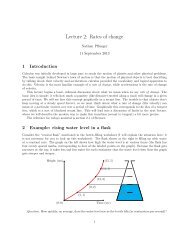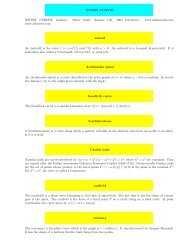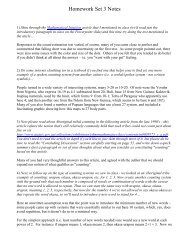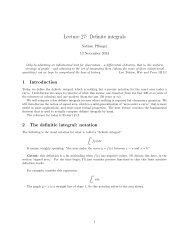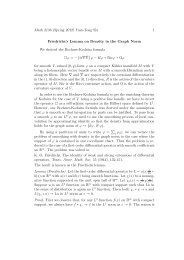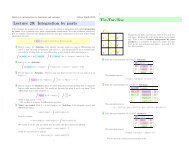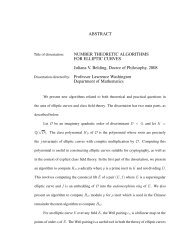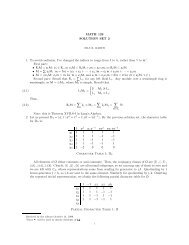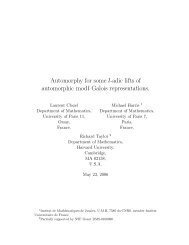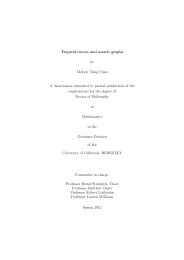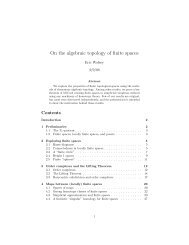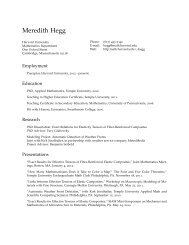Gauge theory for embedded surfaces, II
Gauge theory for embedded surfaces, II
Gauge theory for embedded surfaces, II
Create successful ePaper yourself
Turn your PDF publications into a flip-book with our unique Google optimized e-Paper software.
<strong>Gauge</strong> <strong>theory</strong> <strong>for</strong> <strong>embedded</strong> <strong>surfaces</strong>, <strong>II</strong> 33<br />
though now the fibre product on the left is naturally just K(X o ). The claim is<br />
that the map is surjective <strong>for</strong> all sufficiently large R.<br />
Following the line of (5.3) still, we consider a sequence of connections Ai<br />
belonging to the set K(X), <strong>for</strong> a sequence of neck-lengths Ri going to infinity.<br />
After passing to a subsequence, we obtain a weak limit (A, B), with A and B<br />
being anti-self-dual connections on X o and W o respectively.<br />
Lemma 5.9. In the above situation, the only possibility is that A is in K(X o )<br />
and B is flat, in which case the convergence is strong.<br />
Proof. The first part of the proof of (5.5) applies, and shows that A is in K(X o )<br />
(we are still assuming that the genus and self-intersection numbers satisfy the<br />
inequality laid down in Condition 4.1). The fact that B is flat is an immediate<br />
corollary, since the total action cannot be more than k. Because no action is lost,<br />
the convergence is strong. ⊓⊔<br />
The surjectivity of ΦR <strong>for</strong> large R is a straight<strong>for</strong>ward consequence, as be<strong>for</strong>e,<br />
and since ΦR is now an orientation-preserving diffeomorphism between K(X o )<br />
and K(X), the equality of the two invariants follows. ⊓⊔<br />
Combining Propositions 5.1 and 5.8 directly, we obtain the next result as an<br />
immediate corollary. We state it with all the hypotheses in place:<br />
Theorem 5.10. Let (X,Σ) be an acceptable pair, with X simply connected. Suppose<br />
that the genus g and self-intersection n of Σ satisfy the inequality of (4.1).<br />
Suppose in addition that g is odd and that n is not divisible by 4. Letkbe an<br />
integer in the stable range and put l = 1<br />
4 (2g − 2). Then we have the relation<br />
qk,l(u1,...,ud)=p0,l × qk(ū1,...,ūd).<br />
Here the ui are arbitrary classes in H2(X\Σ), andūi denotes the image of ui<br />
in H2(X). ⊓⊔<br />
(iii) The vanishing theorem.<br />
The final result in this section brings in the inequality between the genus and<br />
self-intersection number as it appears in the main theorem (1.1).<br />
Theorem 5.11. Suppose that X, Σ, k and l satisfy the conditions in Theorem<br />
5.10, and suppose in addition that the inequality of Theorem 1.1 fails, so<br />
(2g − 2)


